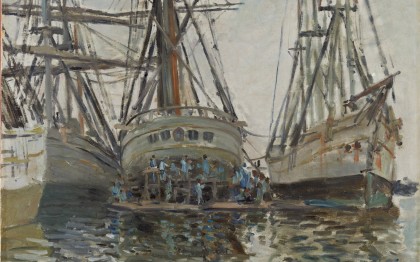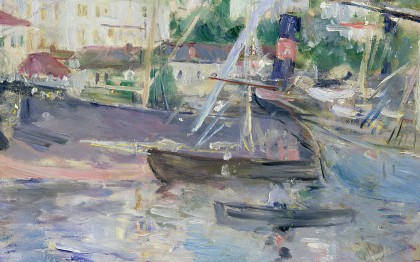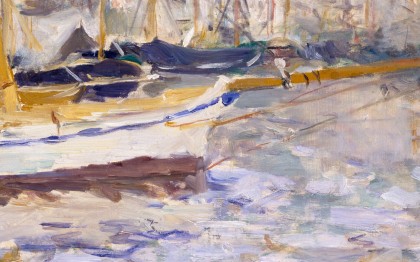In 1856, the photographer Gustave Le Gray created a sensation by exhibiting sumptuous seascapes in London photographed on the Norman coast. In some of them he used an artifice, sticking two differently exposed negatives together for the sky and for the sea. Their almost abstract geometrical composition, with a horizon line blocking them horizontally and symmetrically, brings them close to the compositions that would be painted nearly ten years later by Courbet, Whistler and the Impressionists.
This new generation of artists would in fact restore honour to a genre that was rather neglected in France, marine painting. Jongkind, as a worthy heir of the painters of the Dutch Golden Age showed the way, followed by Boudin, then Monet, Lebourg and Berthe Morisot. A place of passage, life and exchange, but also of economic transition, the port became a favoured source of inspiration for modern artists. They recorded the image of a changing world, where old rigging meets the first steamships, fishermen and yachtsmen.
But rather than a faithful description of the activity of a port, what attracted the artists’ attention was more the misty light, crossed by the continual flux of ships, lit by the countless reflections of their wake. Realism that was still at work in Jongkind’s L’Estacade yields to Monet’s pictorial investigation, playing alternately with the graphics of line or the burst of colour, to reach an almost experimental dimension in Berthe Morisot’s Ports de Nice with its especially bold framing.




